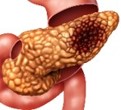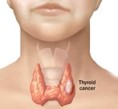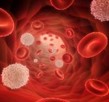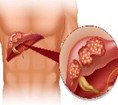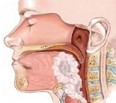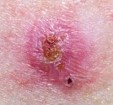Solutions & Products

Cancer AI Models
There are two technology trends of the medical imaging industry are AI (Artificial Intelligence) and SDS (Software-Defined Solutions). They are redefining the medical imaging workflows for Biomedical engineering. Deep learning research in medical imaging is booming. However, most of the biomedical cancer detection application today is performed in isolation and with limited datasets. This leads to overly simplified models which only have high accuracy in narrow use cases. Even when effective Deep Learning algorithms are created, challenges of integration and scalability in deploying these intelligent algorithms into biomedical workflows slow uptake of these technologies.
AI modeling is the creation, training, and deployment of machine learning algorithms that emulate logical decision-making based on available data. AI models provide a foundation to support advanced intelligence methodologies such as real-time analytics, predictive analytics, and augmented analytics. AI models (including machine learning and deep learning) help automate logical inference and decision-making in business intelligence. This methodology helps make analytics smarter and faster, with the ability to scale alongside ever-increasing amounts of data.
What Is AI Modeling?
Following data collection and data preparation with labeling, the third phase in the data pipeline involves the creation of intelligent machine learning models to support advanced analytics. These models use various types of algorithms, such as linear or logistic regression, deep neural networks, decision trees and random forestto to recognize patterns in the data and draw conclusions in a manner that emulates human expertise. Simply put, AI modeling is the creation of a decision-making process that follows three basic steps:
● Modeling:
The first step is to create an AI modeling, which uses a complex or layers of algorithms that interpret data and make decisions based on that data. A successful AI model can act as a surrogate for human expertise in any given use case.
● Model training:
The second step is to train the AI modeling. Most often, training involves processing large amounts of labeled data through the AI frameworks as TensorFlow, Caffe, PyTorch, Keras or MXNet and AI neural network analysis models as CNN, RNN, ANN, MLP or Yolo with in iterative test loops and checking the results to ensure accuracy, and that the model is behaving as expected and desired. Engineers are on hand during this process to modify and improve the AI modeling as it learns.
● Inference:
The third step is known as inference. This step refers to the deployment of the AI modeling into its real-world use case, where the AI model routinely infers logical conclusions based on available data.
IGN Cancer AI Pre-trained Models

Brain Cancer AI Prediction Model [SKU:BRAI]
A brain cancer is understood by the doctrors as the growth of abnormal cells in the brain, some of which can lead to cancer. The traditional method to detect brain tumors is nuclear magnetic resonance (MRI). Having the MRI images, information about the uncontrolled growth of tissue in the brain is identified.IGN brain cancer AI prediction modeling is done through the application of Machine Learning and Deep Learning algorithms. When the AI modeling system is applied to MRI images, brain cancer prediction is done very quickly and greater accuracy supports to deliver more information for patients treatment. This prediction also supports the radiologist to make quick decision.

Lung Cancer AI Prediction Model [SKU:LUAI]
Machine learning based lung cancer AI prediction models can assist clinicians in managing incidental or screen detected indeterminate pulmonary nodules. With lung cancer AI prediction modeling system may be able to reduce variability in nodule classification, improve decision making and ultimately reduce the number of benign nodules that are needlessly followed or worked-up.IGN lung cancer AI prediction modeling is done through the application of Machine Learning and Deep Learning algorithms. When the AI modeling system is applied to MRI or X-ray images, lung cancer prediction is done very quickly and greater accuracy supports to deliver more information for patients treatment. This prediction also supports the radiologist to make quick decision.

Breast Cancer AI Prediction Model [SKU:BCAI]
Breast cancer is the most common cancer affecting women worldwide and the most frequent cause of cancer death in women. new advances in treatment strategies have improved Breast cancer-related mortality and morbidity; however, almost 1/3 of Breast cancer patients show recurrence in the follow-up. Therefore, to improve Breast cancer outcomes, it is necessary to focus on improving screening methods for early detection of recurrence according to risk stratification, identifying new biomarkers, and developing new innovative treatment strategies.IGN breast cancer AI prediction modeling is done through the application of Machine Learning and Deep Learning algorithms. When the AI modeling system is applied to MRI or X-ray images, breast cancer prediction is done very quickly and greater accuracy supports to deliver more information for patients treatment. This prediction also supports the radiologist to make quick decision.

Liver Cancer AI Prediction Model [SKU:LIAI]
With the increase of the aged population, the prevalence of malignant liver tumors is expected to increase, so an efficient method for screening lesions is imperative. Abdominal ultrasonography is a non-invasive, highly convenient, and versatile imaging technique that is commonly used for liver tumor diagnosis. However, extensive experience in ultrasonography is required for accurate diagnoses because of the need to perform real-time recognition of lesions.Artificial intelligence is emerging as a major tool in the fields of medicine and healthcare, particularly in image diagnosis.IGN liver cancer AI prediction modeling is done through the application of Machine Learning and Deep Learning algorithms. When the AI modeling system is applied to MRI or X-ray images, liver cancer prediction is done very quickly and greater accuracy supports to deliver more information for patients treatment. This prediction also supports the radiologist to make quick decision.

Skin Cancer AI Prediction Model [SKU:SKAI]
Although malignant melanoma accounts for only 4% of skin cancers, it is responsible for about 75% of all skin cancer–associated deaths. Early detection and diagnosis are critical for survival chances of affected patients. Early diagnosis, however, may be difficult, as malignant melanoma and atypical melanocytic nevi frequently present with morphological overlap. Although dermoscopy improves diagnostic accuracy compared with naked eye examination, even specialists rarely achieve sensitivity levels above 80%.IGN skin cancer AI prediction modeling is done through the application of Machine Learning and Deep Learning algorithms. When the AI modeling system is applied to skin images, skin cancer prediction is done very quickly and greater accuracy supports to deliver more information for patients treatment. This prediction also supports the radiologist to make quick decision.

Kidney Cancer AI Prediction Model [SKU:KIAI]
The incidence of kidney cancers is rising, and with it, the need for an efficient way to distinguish between benign and malignant masses on computed tomography (CT) scans. Manual nephrometry scores have been proposed as a way to assess the complexity and aggression of renal masses. However, they involve significant effort by experts and have shown limited power to predict which tumors are malignant.IGN kidney cancer AI prediction modeling is done through the application of Machine Learning and Deep Learning algorithms. When the AI modeling system is applied to kidney CT images, kidney cancer prediction is done very quickly and greater accuracy supports to deliver more information for patients treatment. This prediction also supports the radiologist to make quick decision.

Pancreatic Cancer AI Prediction Model [SKU:PAAI]
Pancreatic cancer is an aggressive disease that typically presents late with poor patient outcomes. There is a pronounced medical need for early detection of pancreatic cancer, which can be facilitated by identifying high-risk populations. Detecting pancreatic cancer earlier in the disease course may improve treatment options for these patients. An artificial intelligence model showed potential for pancreatic cancer prediction may can solve these problems.IGN pancreatic cancer AI prediction modeling is done through the application of Machine Learning and Deep Learning algorithms. When the AI modeling system is applied to Pancreatic computerized tomography (CT) scan images or magnetic resonance imaging (MRI) images, pancreatic cancer prediction is done very quickly and greater accuracy supports to deliver more information for patients treatment. This prediction also supports the radiologist to make quick decision.

Colorectal Cancer AI Prediction Model [SKU:COAI]
Colorectal cancer (CRC) is one of the most common cancers worldwide. Accurate early detection and diagnosis, comprehensive assessment of treatment response, and precise prediction of prognosis are essential to improve the patients’ survival rate. In recent years, due to the explosion of clinical and omics data, and groundbreaking research in machine learning, artificial intelligence (AI) has shown a great application potential in clinical field of colorectal cancer.IGN colorectal cancer AI prediction modeling is done through the application of Machine Learning and Deep Learning algorithms. When the AI modeling system is applied to colorectal computerized tomography (PET/CT) scan images or magnetic resonance imaging (MRI) images, colorectal cancer prediction is done very quickly and greater accuracy supports to deliver more information for patients treatment. This prediction also supports the radiologist to make quick decision.

Prostate Cancer AI Prediction Model [SKU:PRAI]
Prostate cancer is the most commonly diagnosed non-skin malignancy in men and second leading cause of mortality from cancer. Challenges faced during the course of prostate cancer management include increased volume of prostate biopsies and a shortage of urological pathologists, which puts a strain on diagnosis of prostate cancers.Artificial Intelligence (AI) and machine learning in the healthcare is a new area of applications. In prostate cancer, the use of AI overall has shown to be beneficial to aid in a standardized pathological grading to assess prostate cancer stratification and treatment. IGN prostate cancer AI prediction modeling is done through the application of Machine Learning and Deep Learning algorithms. When the AI modeling system is applied to prostate computerized tomography (PET/CT) scan images or magnetic resonance imaging (MRI) images, prostate cancer prediction is done very quickly and greater accuracy supports to deliver more information for patients treatment. This prediction also supports the radiologist to make quick decision.

Cervical Cancer AI Prediction Model [SKU:CEAI]
Cervical malignant growth is the fourth most typical reason for disease demise in women around the globe. Cervical cancer growth is related to human papillomavirus (HPV) contamination. Early screening made cervical cancer a preventable disease that results in minimizing the global burden of cervical cancer. The application of AI in the early screening and diagnosis of cervical cancer is conducive to addressing limited human resources and improving diagnostic accuracy.IGN cervical cancer AI prediction modeling is done through the application of Machine Learning and Deep Learning algorithms. When the AI modeling system is applied to cervical computerized tomography (PET/CT) scan images or magnetic resonance imaging (MRI) images, cervical cancer prediction is done very quickly and greater accuracy supports to deliver more information for patients treatment. This prediction also supports the radiologist to make quick decision.

Ovarian Cancer AI Prediction Model [SKU:OVAI]
Ovarian cancer is the most common cancer in women and usually affects women after the menopause or those with a family history of the disease. The long-term survival rate is just 35-40 percent as the disease is often diagnosed at a much later stage once symptoms such as bloating are noticeable. Doctors diagnose ovarian cancer in a number of ways including a blood test to look for CA125 – an indication of cancer - followed by a CT scan that uses x-rays and a computer to create detailed pictures of the ovarian tumour. This helps clinicians know how far the disease has spread and determines the type of treatment patients receive, such as surgery and chemotherapy.IGN ovarian cancer AI prediction modeling is done through the application of Machine Learning and Deep Learning algorithms. When the AI modeling system is applied to ovarian computerized tomography (CT) scan images orX-ray images, ovarian cancer prediction is done very quickly and greater accuracy supports to deliver more information for patients treatment. This prediction also supports the radiologist to make quick decision.

Stomach Cancer AI Prediction Model [SKU:STAI]
Stomach cancer occurs when cancerous cells grow within the lining of the stomach. This type of cancer is also called gastric cancer, and it can be difficult to diagnose because most people typically don’t show symptoms in the earlier stages. As a result, it often goes undiagnosed until after it spreads to other parts of the body.IGN Stomach cancer AI prediction modeling is done through the application of Machine Learning and Deep Learning algorithms. When the AI modeling system is applied to ovarian computerized tomography (CT) scan images orX-ray images, ovarian cancer prediction is done very quickly and greater accuracy supports to deliver more information for patients treatment. This prediction also supports the radiologist to make quick decision.
To get the SKU of "Cancer AI Modeling" product software codes for new Artificial Intelligence software applications, Please contact us below:
1. Website contact us Contact
2. Check our website Contact Info with letter address or email(tim.chen@cancerisp.com)
3. Check our website Follow US social media
4. Go to NFT marketplace search SKU info NFT Marketplace
5.Go to purchase Cart

Metaverse Healthcare
Metaverse in healthcare has several potential applications, however, some key applications include Support Mental Health, Medical Education, Medical Training, Surgical Segment, Fitness and Wellness.
VR for Cancer Pain Management [SKU:FOC3]
To use VR for pain management? Yes, Although more high methodological quality studies are needed to determine whether VR technology is effective in controlling symptoms in patients with cancer, the results of some studies suggested that VR intervention may be beneficial for the management of pain and anxiety in patients with cancer. Therefore, clinicians may consider VR technology as an adjunctive intervention for pain and anxiety management. VR in the better and more advanced form in the coming years, seems to be the most promising and powerful noninvasive tool to treat and manage pain. The VR is a mind-body treatment that can distract the mind from pain, and block the pain signals from reaching the brain.
It is like a drug-free supplement to traditional pain management techniques. VR Pain management procedures can help to reduce fear and anxiety, especially among children and old age people. Therapeutic VR can potentially eliminate the demand for pain management drugs and the side effects associated with it.
VR in the better and more advanced form in the coming years, seems to be the most promising and powerful noninvasive tool to treat and manage pain. The VR is a mind-body treatment that can distract the mind from pain, and block the pain signals from reaching the brain.
It is like a drug-free supplement to traditional pain management techniques. VR Pain management procedures can help to reduce fear and anxiety, especially among children and old age people. Therapeutic VR can potentially eliminate the demand for pain management drugs and the side effects associated with it.IGN Cancer Pain Management Platform
IGN Cancer pain management platform is a set of pre, during and post cancer treatment virtual reality (VR) powered immersive journeys and games for supporting patients at every stage of cancer. Surgery, chemotherapy, radiation, targeted therapy, immunotherapy, laser therapy, hormone therapy are the most often used cancer treatments. A patient needs Cancer rehabilitation after going through such a painful treatment.VR(Virtual Reality) is a computer-based technology that allows users to immerse themselves in and interact with a multimodal virtual environment. As a result, patients will be able to receive feedback on their activities and workouts in real-time. The use of virtual reality in therapy can improve the ease, acceptability, and efficacy of anxiety treatment. IGN Cancer pain management platform is a novel approach to traditional rehabilitation therapy and activities. It also improves hand-eye coordination. For engagement and motivation, the platform provides a variety of games with varying degrees of sophistication. It can be adjusted and customised to meet
 a wide range of patient needs, difficulty levels, and patient objectives. It is a suitable platform for cancer rehabilitation center as well as practice at home. The hardware platform key features:
a wide range of patient needs, difficulty levels, and patient objectives. It is a suitable platform for cancer rehabilitation center as well as practice at home. The hardware platform key features:• 5K resolution virtual reality headset
• Screen resolution: 2448 x 2448 pixels per eye, 4896 x 2448 pixels combined
• 90 Hz refresh rate
• 120° field of view
• Dual microphone with echo cancellation
• Hi-Res certified 3.5 mm jack audio input
• Pupil distance (IPD) adjustable from 57 to 72 mm for better visual comfort
• Sensors: 4x tracking cameras, G-Sensor, gyroscope, proximity sensor
• Magnetic mount and easy-to-clean leatherette back padding
• Connectivity: 2 x USB C Gen.3.2 peripheral ports, Bluetooth 5.2 + BLE, Wi-Fi 6
• Removable and interchangeable 26.6 Wh battery
To get the SKU of FOC3 "Cancer Pain Management Platform" product, Please contact us below:
1. Website contact us Contact
2. Check our website Contact Info with letter address or email(tim.chen@cancerisp.com)
3. Check our website Follow US social media
4. Go to NFT marketplace search SKU info NFT Marketplace
5. Go to purchase Cart

Herbal Complementary Synergy Cancer Prescriptions
When it comes to chronic illnesses like cancer that have a shorter life expectancy, it is important to have a survival rate that estimates the prognosis. Survival rate is the percentage of people in a treatment group suffering from the same disease, who are still alive for a certain period of time after they were diagnosed. That said, while your doctor cannot predict your future, nor can he tell you how the disease will develop, with the help of a survival rate, they can make an estimate on the basis of other people's experiences. Survival rates can describe any given length of time. However, doctors usually give cancer statistics as a 5-year relative survival rate.
Another five more years to live
Complementary Synergy
 Cancer is a life threatening disease that can affect anyone regardless of race, age, and gender. Cancer is treated in several ways. It depends on the kind of cancer and how far it has spread. Cancer treated with surgery, chemotherapy, radiation therapy, targeted drug therapy, immunotherapy are considered as the main modes of treatment. However, treatment can also cause unwanted effects. These are called side effects or complications. Some short-term complications can happen straight after treatment such as vomiting, numbness, nausea and diarrhea to name a few. The most common complications following cancer treatment as brain cancer may be neurologic, haemodynamic, metabolic or respiratory in nature. Major neurologic complications include postoperative haematomas, cerebral oedema and seizures, pain and hyperglycaemia, headaches, hair loss, nausea, vomiting, extreme fatigue, hearing loss, skin and scalp changes and trouble with memory and speech. Once Brain cancer treatment ends, most side effects may go away. However, you may have some long-term side effects such as memory loss, stroke-like symptoms, and poor brain function. These complications may occur months, years or even for a lifetime.
Cancer is a life threatening disease that can affect anyone regardless of race, age, and gender. Cancer is treated in several ways. It depends on the kind of cancer and how far it has spread. Cancer treated with surgery, chemotherapy, radiation therapy, targeted drug therapy, immunotherapy are considered as the main modes of treatment. However, treatment can also cause unwanted effects. These are called side effects or complications. Some short-term complications can happen straight after treatment such as vomiting, numbness, nausea and diarrhea to name a few. The most common complications following cancer treatment as brain cancer may be neurologic, haemodynamic, metabolic or respiratory in nature. Major neurologic complications include postoperative haematomas, cerebral oedema and seizures, pain and hyperglycaemia, headaches, hair loss, nausea, vomiting, extreme fatigue, hearing loss, skin and scalp changes and trouble with memory and speech. Once Brain cancer treatment ends, most side effects may go away. However, you may have some long-term side effects such as memory loss, stroke-like symptoms, and poor brain function. These complications may occur months, years or even for a lifetime.Herbal medicine has a complementary synergy that people with cancer use to ease cancer symptoms. Herbal remedies for cancer such as those commonly found in traditional medicine contains antimutagenic, anti-inflammatory, and apoptosis inducing compounds that help in slowing the development of cancer and relieve treatment side effects for patients. Research indicated that cancer complications can be used herbs to improve systemic blood circulation and reduce bleeding and inflammatory reactions, improve the protection of the immune system and the anti-free radical effect for body health. It has a very obvious to relieve the complications of cancer treatment. It has nourishing vital energy and blood, nourishing the liver and kidney, softening the firmness and removing blood stasis. It can correct the imbalance of the body, remove the recurrence factors of cancers and reduce the chance of metastasis. When the cancer improves, physical strength will gradually be restored, immunity will be gradually enhanced, the patient's diet, sleep conditions, physique will be enhanced and the patient's survival period and quality of life will be improved.
Differebt type of herbs can help to manage the side effects after conventional cancer treatment. However, doctors do not recommend that cancer patients take herbal medicine while undergoing conventional cancer treatment. Herbal medicines may be likely less to cause side effects than traditional drugs. But patients may can still experience complications. Some herbs may can cause negative interactions with chemotherapy drugs. Closely monitor how you feel before and after taking herbal remedies. Patients should always consult with their doctor before trying herbs as a complementary synergy or the supplements to avoid complications.
Herbal Complementary Synergy Cancer Solutions with Classification SKU:
A) The top 23 Cancer SKUs Herbal Prescriptions:
B) The classification based on body system cancer SKUs are as below:
• Lymphatic System Cancer:• Digestive System Cancer:
• Endocrine System Cancer:
• Brain Nervous System Cancer:
• Reproductive System Cancer:
• Respiratory System Cancer:
• Skin System Cancer:
• Cardiovascular System Cancer:
• Muscular System Cancer:
• Skeletal System Cancer:
• Urinary System Cancer:
• Visual System Cancer:
To get the SKU of "Cancer herbal complementary synergy solutions " product, Please contact us below:
1. Website contact us Contact
2. Check our website Contact Info with letter address or email(tim.chen@cancerisp.com)
3. Check our website Follow US social media
4. Go to NFT marketplace search SKU info NFT Marketplace
5.Go to purchase Cart
Anti-Cancer Recipes ACR100 - Cancer Prevention and Treatment Side Effects Nutrition Interventions [SKU:ACR100]
 It has been estimated that about 40 percent of all cancers can be prevented by lifestyle and dietary measures alone such as to intake of flax seed, especially its lignan fraction, and abundant portions of fruits and vegetables will lower cancer risk. Cruciferous vegetables are especially beneficial, with broccoli sprouts being the densest source of sulforophane. Protective elements in a cancer prevention and anti-cancer diet include selenium, folic acid, vitamin B-12, vitamin D, chlorophyll, and antioxidants such as the carotenoids (α-carotene, β-carotene, lycopene, lutein, cryptoxanthin).
It has been estimated that about 40 percent of all cancers can be prevented by lifestyle and dietary measures alone such as to intake of flax seed, especially its lignan fraction, and abundant portions of fruits and vegetables will lower cancer risk. Cruciferous vegetables are especially beneficial, with broccoli sprouts being the densest source of sulforophane. Protective elements in a cancer prevention and anti-cancer diet include selenium, folic acid, vitamin B-12, vitamin D, chlorophyll, and antioxidants such as the carotenoids (α-carotene, β-carotene, lycopene, lutein, cryptoxanthin). When a diet is compiled according to the " Anti-Cancer Recipes ACR100" here it is likely that there would be at least a 40-60 percent decrease the risk for all of cancers. Good Nutrition is the best anti-cancer diets. Eating well, keeping active and maintaining a healthy body weight have been shown to reduce the risk of developing cancers. Good nutrition is especially important if you have cancer because both the illness and its treatments can change the way you eat. Cancer and cancer treatments can also affect the way your body tolerates certain foods and uses nutrients.
An anti-cancer diet is an important strategy you can use to reduce your risk of cancer. You need to eat at least five servings of fruits and vegetables daily and eat the right amount of food to stay at a healthy weight. Certain prevent cancer foods may be an important part of an anti-cancer diet. The "Anti-Cancer Recipes ACR100" provides the best diets nutritions for anti-cancer nutrition during cancer prevention, before cancer treatment, after cancer treatment and prognosis side effect solutions help you to get the chances of another 5 years more or 10 years more survival opportunities or for your life with cancer-free solutions.
The "Anti-Cancer Recipes ACR100" including top 60 anti-cancer foods, 10 common cancer treatment side effects prevention reference foods and 330+ health and nutritional recipes.
To get the SKU of ARC100 "Anti-cancer Recipes ARC100" product, Please contact us below:
1. Website contact us Contact
2. Check our website Contact Info with letter address or email(tim.chen@cancerisp.com)
3. Check our website Follow US social media
4. Go to NFT marketplace search SKU info NFT Marketplace
5.Go to purchase Cart
Cancer Treatment Side Effects herbal Tea Interventions -- Anti-Cancer Herbal Teas ACHT4 [SKU:ACHT4]
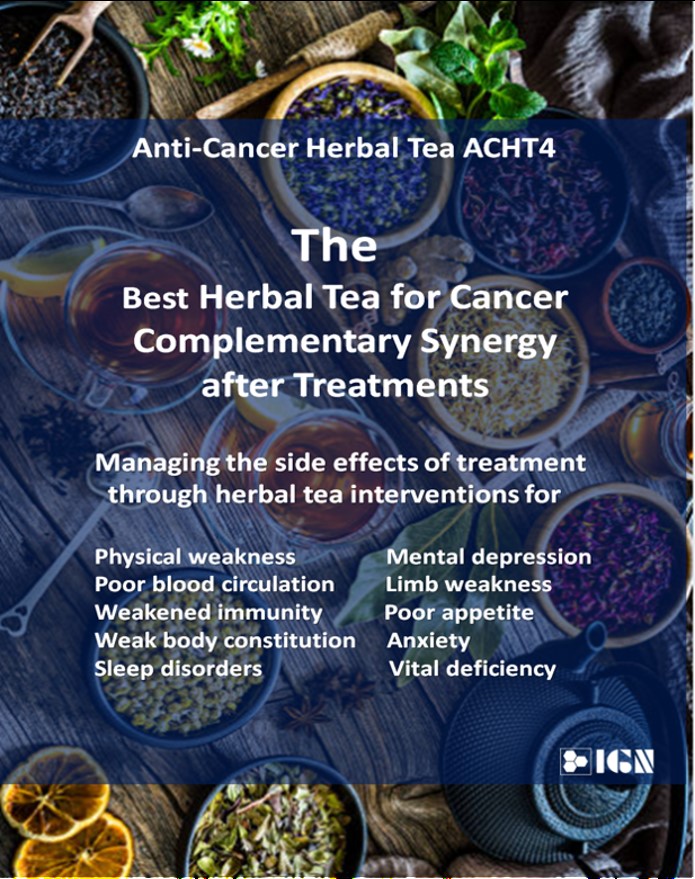 Tea has strong antioxidant and anti-inflammatory properties and has multiple health benefits. Several laboratory studies also suggest possible benefits of taking different types of teas including herbal tea in cancer prevention or for the complementary synergy after cancer treatments. Herbal teas are generally made from herbs, berries, fruits, seeds, flowers, leaves or roots of different types of plants soaked in hot water. Based on the plant used for producing the tea, the chemical composition of herbal teas also varied.
Tea has strong antioxidant and anti-inflammatory properties and has multiple health benefits. Several laboratory studies also suggest possible benefits of taking different types of teas including herbal tea in cancer prevention or for the complementary synergy after cancer treatments. Herbal teas are generally made from herbs, berries, fruits, seeds, flowers, leaves or roots of different types of plants soaked in hot water. Based on the plant used for producing the tea, the chemical composition of herbal teas also varied.Herbal tea has a complementary synergy that some people with cancer use to ease cancer symptoms. Research indicated that cancer complications can be used herbal tea to improve systemic blood circulation and reduce bleeding and inflammatory reactions, improve the protection of the immune system and the anti-free radical effect for your body health.
For cancer patients who continue to receive cancer treatment such as chemotherapy, the patient's bone marrow will be suppressed, resulting in low blood cells. Doctors often delay the next chemotherapy depending on the situation. This time difference often allows cancer cells to take advantage of the opportunity to grow and reduce the effect of chemotherapy. At this stage, timely intervention of complementary herbal tea assistance will not only relieve the physical body discomfort, but also replenish vital energy and blood circulation deficiency, improve low blood cells, and allow patients to complete chemotherapy according to the original time. The efficacy of traditional herbal tea is mainly used for conditioning the body, which can help relieve discomfort of cancer patients during chemotherapy.
The "Anti-Cancer herbal Teas ACHT4" including Energy Tea, Vital Tea, Spirit Tea and Calming Tea for the complementary synergy after cancer treatments to manage the side effects of treatment trough herbal tea interventions for physical weakness and poor blood circulation, weak body constitution, loss of appetite and weakened immunity, mental depression, limb weakness and poor appetite, depression, anxiety and sleep disorders
To get the SKU of ACHT4 "Anti-Cancer Herbal Teas ACHT4" product,Please contact us below:
1. Website contact us Contact
2. Check our website Contact Info with letter address or email(tim.chen@cancerisp.com)
3. Check our website Follow US social media
4. Go to NFT marketplace search SKU info NFT Marketplace
5.Go to purchase Cart

Radon & Cancer Prevetion
Radon Overview
Radon is an odorless, colorless, tasteless, radioactive gas that is produced from the decay of naturally occurring uranium in the soil. Radon gas rises up through the soil and is pulled into a house or building. It enters a home or building through cracks in the foundation, construction joints, gaps around service pipes or wires, and sump pits. Risk occurs when this gas enters home, buildings and the decay products are breathed in. These decay products can damage the lungs and cause lung cancer. It doesn’t matter what type of foundation your home has basement, crawl space, slab, your home could have high levels of radon. radon can enter you home in many ways:● Cracks in solid floors
 ● Construction joints
● Construction joints● Cracks in walls
● Gaps in suspended floors
● Gaps around service pipes
● Cavities inside walls
● The water supply
Radon can be found anywhere. Outdoor levels are usually very low, but indoor levels can be very high. It doesn’t matter where you live, how old your home is, or what type of foundation it has the only way to know the level of radon gas in a home is to perform a test. Everyone is at risk for developing lung cancer from exposure to radon gas. However, smokers who are also exposed to elevated levels of radon have an especially high risk of developing lung cancer.
Is Radon dangerous? Yes! Cause Lung Cancer and Brain Cancer!
 In the air, radon breaks down into tiny radioactive elements (radon progeny) that can lodge in the lining of the lungs, where they can give off radiation. This radiation can damage lung cells and eventually lead to lung cancer. Radon is the second leading cause of lung cancer in the United States. According to the EPA estimates that about 21,000 and over 400,000 worldwide people die each year from radon-related lung cancer.
In the air, radon breaks down into tiny radioactive elements (radon progeny) that can lodge in the lining of the lungs, where they can give off radiation. This radiation can damage lung cells and eventually lead to lung cancer. Radon is the second leading cause of lung cancer in the United States. According to the EPA estimates that about 21,000 and over 400,000 worldwide people die each year from radon-related lung cancer. Radon Monitor
IGN Radon monitor is a professional home measuring device that combines accuracy, reliability and ease of use with excellent performance. It allows you to take a reading of the radon levels with short-term of hourly, daily, weekly, monthly and long-term 1 year concentrations. Powered by a rechargeable lithium battery that can last up to 30 days with ones fully charged. The radon monitor makes it easy to take measurements from one room to another in order to get an overview of the concentrations of the radon gas in a home, workplace, school, a daycare center or any other location. The monitor is also an essential tool to use when performing property inspections or when checking the operation of a radon mitigation system. Please check below product specifications:IGN Radon monitor specifications:


| Detecting Technology | Passive radon diffusion chamber |
| Sensor | Alpha spectrometry sensor |
| Battery | Rechargeable lithium battery DC3.7v 1000mAH |
| Power Consumption | <50uA |
| Max.testing time each recharging | >3000 hours |
| Precision 7 days | <20% |
| Precision Long-term | <10% after 1 month |
| Accuracy | 5% ±0.14pCi/L (** 1 pCi/L = 37 Bq/m3) |
| Measurement range | UP to 100 pCi/L (3700 Bq/m3) |
| Minimum available measurement time | 30 minutes |
| Operation environment | Temperature: 0 to +40 Relative humidity <95% |
| Dimensions | L116.5*W60*H15.5mm |
| Weight | 85g |
What do my results mean?
The results from radon testing will be provided in picoCuries per liter (pCi/L) for US version. The US EPA has set an action level of 4.0 pCi/L or Global version becquerels per cubic meter (Bq/m3) action level of 148 Bq/m3. If the building’s level is equal to or above 4.0 pCi/L or 148 Bq/m3 radon reduction methods such as a mitigation system is recommended to reduce the radon level.Radon level and Mitigation System Recommendations:
| Results in pCi/L | Action needed |
| Below 2.0 | Consider performing a long-term test. If not, re-test in two years. |
| Between 2.0 to 4.0 | Consider installing a mitigation system as levels in this range still pose a risk. |
| Between 4.0 to 8.0 | Follow up another short-term test. If the average of two tests is greater than 4.0 it is highly recommended that a mitigation system be installed to reduce levels. |
| Greater than 8.0 | Follow up another short-term test. If two tests are similar, it is highly recommended that a mitigation system be installed to reduce levels. |
To get the SKU of RD35 "IGN Radon Monitor" product, Please contact us below:
1. Website contact us Contact
2. Check our website Contact Info with letter address or email(tim.chen@cancerisp.com)
3. Check our website Follow US social media
4. Go to NFT marketplace search SKU info NFT Marketplace
5.Go to purchase Cart
Radon mitigation Strategies
 Radon mitigation is any process or system used to reduce radon concentrations in buildings. The goal of the radon mitigation system is to reduce the indoor radon level as low as reasonably achievable. All systems should reduce radon below the EPA action level of 4 pCi/L (picocuries of radon per liter of air) or 148 Bq/m3 (becquerels of radon per cubic meter of air). A quality radon mitigation system may reduce year-round levels to below 2 pCi/L or 74 Bq/m3.
Radon mitigation is any process or system used to reduce radon concentrations in buildings. The goal of the radon mitigation system is to reduce the indoor radon level as low as reasonably achievable. All systems should reduce radon below the EPA action level of 4 pCi/L (picocuries of radon per liter of air) or 148 Bq/m3 (becquerels of radon per cubic meter of air). A quality radon mitigation system may reduce year-round levels to below 2 pCi/L or 74 Bq/m3.I) SSD Sub-Slab Depressurization
Radon mitigation systems use sub-slab depressurization to prevent radon from entering your home by drawing the radon from the house and venting it through a pipe to the outside air above your roof. Sub-slab depressurization systems are installed in buildings with slab (concrete) floors. It consists of PVC piping installed through the slab floor and fan connected with the piping. When the system is on, the fan applies a vacuum beneath the slab and the vapors in the soil beneath the building are directed outside. It is most common and reliable active system depressurization method.
II)Sealing
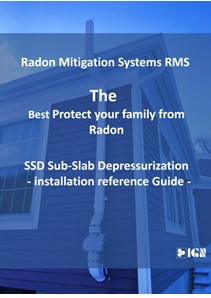 All gaps and openings through basement floors and walls can be sealed with gas-tight materials. The caulk type with the best adhesion to concrete is polyurethane (not silicone). Since it can be inexpensive and does make mitigation systems more effective, it is worth a try, but one shouldn't expect it to have a major effect. It might reduce radon levels significantly if the area of openings that are sealed adds up to several square inches. Hairline cracks are not worth sealing.
All gaps and openings through basement floors and walls can be sealed with gas-tight materials. The caulk type with the best adhesion to concrete is polyurethane (not silicone). Since it can be inexpensive and does make mitigation systems more effective, it is worth a try, but one shouldn't expect it to have a major effect. It might reduce radon levels significantly if the area of openings that are sealed adds up to several square inches. Hairline cracks are not worth sealing.III) Construction
Radon-resistant construction can be installed into new homes. Building radon resistance into a new house is cheaper than radon mitigation after construction as the needed building materials are common and the techniques are straightforward.
To get the SKU of RMS-SSD"Radon Mitigation Systems with Sub-Slab Depressurization installation reference Guide" product, Please contact us below:
1. Website contact us Contact
2. Check our website Contact Info with letter address or email(tim.chen@cancerisp.com)
3. Check our website Follow US social media
4. Go to NFT marketplace search SKU info NFT Marketplace
5.Go to purchase Cart
IV) Activated Carbon Air Purifier
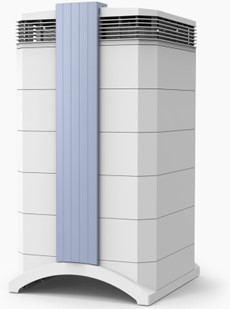 Modern buildings are often well insulated and sometimes windows are even unusable in order to save on energy costs. However, little airflow can allow radon to build up to high levels and radon gas from the basement cesspool flows up through the common drain pipe to each floor of the building and causing radon gas pollution. Long term exposure the radon gas can be dangerous. As radon is a gas, its levels fluctuate over time. Monitoring these fluctuations over long periods of time allows us to have more accurate and meaningful results to do actions. Direct and effective actions are:
Modern buildings are often well insulated and sometimes windows are even unusable in order to save on energy costs. However, little airflow can allow radon to build up to high levels and radon gas from the basement cesspool flows up through the common drain pipe to each floor of the building and causing radon gas pollution. Long term exposure the radon gas can be dangerous. As radon is a gas, its levels fluctuate over time. Monitoring these fluctuations over long periods of time allows us to have more accurate and meaningful results to do actions. Direct and effective actions are:● Open windows to allow air circulation to reduce radon levels
● Turn on the activated carbon air purifier.
According to studies, air purifiers with a high activated carbon content work best against radon. Due to the radon gas unattached RnDP particle can be even smaller 0.5-3 nm then a HEPA(high-efficiency particulate air) filter 0.3 microns, a hyperHEPA technology air purifier ensures more than 99% accuracy for particles as small as 0.003 microns (3 nm) and a 99.99% accuracy for particles under 0.3 microns is needed such as IQAir GC MultiGas Air Purifier .
If you want we help to get the SKU of GC-MGAP "IQAir GC MultiGas Air Purifier" product(It is independently selected. If you buy through this link we may earn an affiliate commission), Please contact us below:
1. Website contact us Contact
2. Check our website Contact Info with letter address or email(tim.chen@cancerisp.com)
3. Check our website Follow US social media
4. Go to NFT marketplace search SKU info NFT Marketplace
5.Go to purchase Cart
NFT Healthcare
The datastes of Anti-Cancer Recipes ACR100, Anti-Cancer Herbal Teas ACHT4 and Cancer Complementary Synergy Herbal Solutions with Classification SKUs have been created into digital files stored by blockchain technology in NFT marketplace for user to buy the assets:

Anti-Cancer Herbal Tea ACHT4: The Best Tea for Cancer Complementary Synergy
Opensea NFT Search: ACHT4 
BRCCP1 Breast Cancer Complications Herb Prescriptions for Cancer patients
Opensea NFT Search: BRCCP1 
BRCCP2 Breast Cancer Complications Herb Prescriptions for Cancer patients
Opensea NFT Search: BRCCP2 
BRCCP3 Breast Cancer Complications Herb Prescriptions for Cancer patients
Opensea NFT Search: BRCCP3 
BRCCP4 Breast Cancer Complications Herb Prescriptions for Cancer patients
Opensea NFT Search: BRCCP4 
ORCCP Oral cavity cancer Complication Herb Prescription for Cancer patients
Opensea NFT Search: ORCCP 
PACCP Pancreatic Cancer Complications Herb Prescriptions for Cancer patients
Opensea NFT Search: PACCP
 EN
EN 

